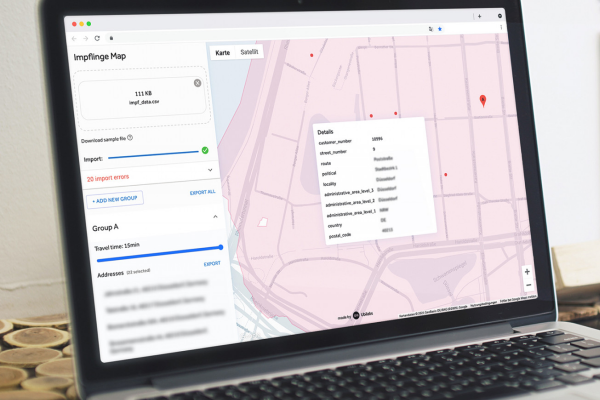
From storm squalls to pollen load - for a long time now, a weather map has had to be able to do more than just display precipitation and temperature for the next few days. For t-online, we developed an optimized weather map with numerous data layers.
It's been two years since we developed a weather map for the news portal. In the course of the relaunch of t-online we now updated the map. In addition to more data layers and improved performance, we also equipped the map with a new design to match the new website. But how did we manage to pack popular features into a clear design and display the wealth of data in a performant way?
The solution: a mapbox map that can be integrated into the t-online site as a separate module, a new data source including an efficient data format, a revised UI and new features that also take user feedback into account.
Weather data on the map
A modern weather map must be able to do more than just display the precipitation and temperature for the next few days. For a long time now, users have also expected information such as wind, severe weather and pollen load - a basic prerequisite for high user satisfaction.
With wetter.com, we had a strong partner at our side for this project. The weather portal provides us with extensive weather data - and in a format that brings advantages for performance and design. We receive the weather data in so-called raster tiles. These are particularly resilient in mobile applications. We receive the data via a special interface. This allows us to colorize the tiles in a range of colors to match t-online's corporate identity and thus seamlessly integrate the weather map into the website's design.
In addition to better performance and more freedom in design, the cooperation with wetter.com also helped us to increase the amount of data. In the current update, we were able to add additional data layers to the weather map. In addition to the previous information on the weather situation and the precipitation radar, the map offers new and improved layers. Added are e.g. thunderstorm risk, gusts and thunderstorms. The existing pollen layer has been expanded to include new pollen types and is now available for every location in Germany - no longer only for specific locations as was previously the case.
User Centricity as a success factor for weather maps
There are many weather maps and apps out there - it's not exactly easy to hold your own in this field. As part of the t-online website redesign, our existing weather map was also to be updated. One thing was clear: In addition to the extensive data base, the design had to be clear and coherent, the map features had to be as extensive as desired by the users, and the map had to be as performant as possible.
For the development of the weather map, t-online could rely on our many years of expertise in map frameworks, the visualization of real-time data and data forecasting. We optimized the user interface of the map so that the large amount of data is presented in an easily understandable and intuitively navigable way. When selecting features, we relied on feedback from users. We did not only add new features to the map, but also removed less popular features such as the global temperature. Together with the optimized performance, this is an unbeatable combination for customer loyalty.





